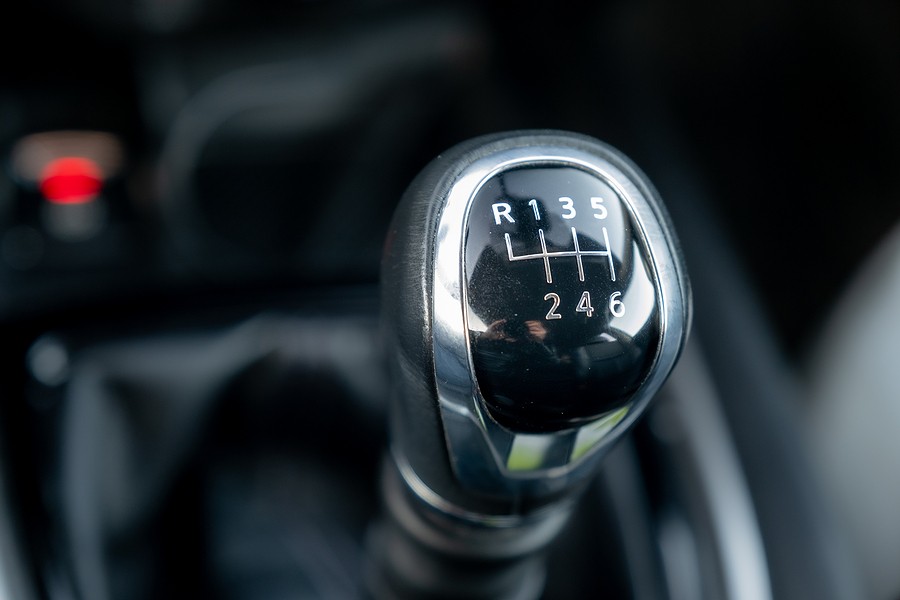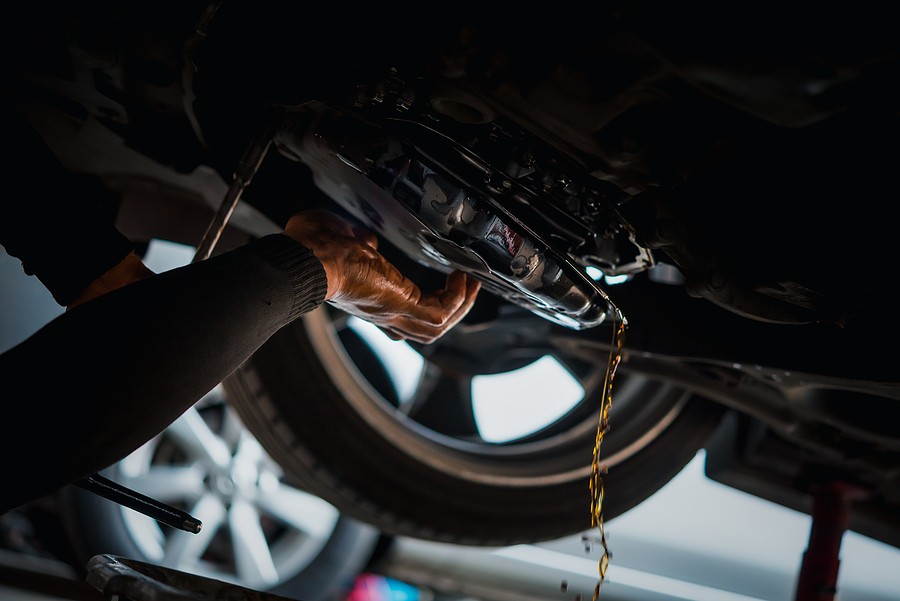If you suspect that your transmission is slipping, here are the six potential causes:
- Problems with the transmission fluid
- Issues with the transmission clutch
- Problems with the valve body
- Problems with the gears
- Faulty solenoids
- Faulty torque converter
Your vehicle transmission is one of your car's most important core components. If it has a problem, you won't be able to drive your vehicle, and it requires very expensive repair costs to be fixed.
One of the very common problems that your transmission might experience is what's known as transmission slipping. This article provides all you need to know about transmission slipping meaning, different reasons for transmission slipping, and the costs required to fix this problem.
Let's read for more details to help you answer the question, “why is my transmission slipping?”

What does ‘transmission slipping’ mean?
Before we dive into the details of valves, “why is my transmission slipping,” we would like to sit back and ensure that you understand what transmission slipping means. Sometimes you might experience problems with the transmission, but it's not necessarily transmission slipping.
Transmission slipping means that your transmission is not switching between gears smoothly. Or, in some instances, the transmission might not stay fully on a specific gear that it should be on.
When this happens, it indicates that some internal problems prevent the transmission from sticking to one gear. These problems might not be the same if you're driving a vehicle equipped with an automatic transmission versus another vehicle equipped with manual transmission.

Why is my transmission slipping?
When you're experiencing slipping transmission, you got to immediately determine what's causing this issue and take care of it. While there are many potential reasons for causing your transmission to slip, here are the top reported six common causes for transmission slipping to help you answer the question, “why is my transmission slipping?”
1. Problems with the transmission fluid
The first and most common cause of a slipping transmission is when you don't have enough fluid in your transmission. Like many other components in your vehicle, the transmission requires fluid to state lubricated and operate properly. When the transmission fluid drops below a certain point, you will start dealing with some complications, including the transmission slipping issue.
Can I measure the transmission fluid?
Unfortunately, there is no dipstick to help you determine the fluid level in your transmission. Therefore, we typically advise our readers to visit a qualified mechanic and determine how much transmission fluid is left. Sometimes, you might figure out that you're dealing with a problem, especially if you realize some fluids are dripping underneath the transmission location.
If that's the case, you might be dealing with a transmission leak due to some problems internally. This problem also requires a qualified mechanic to determine the locations of the leaks and take care of them to resolve the issue.
Are there any transmission fluid problems that I should consider?
Keep in mind that fluid leak is not the only problem that could cause transmission slipping. For example, when the fluid is not clean or when it's very old, it might impact how your transmission operates. For example, if there are lots of dirt or foreign objects inside the transmission, it impacts the pressure and the functionality of your vehicle in terms of switching gears.
Therefore, we highly encourage you to go through your vehicle's owner's manual and determine how often you should flush the transmission fluid and remove it. In addition, some other articles could walk you through some potential signs of dirty or old transmission fluids that you might need to change before you reach the threshold indicated in your vehicle's owner's manual.
2. Issues with the transmission clutch
As mentioned before, transmission slipping could happen in manual and automatic transmissions. However, that faulty culprit might be different in both transmissions.
If you're driving a vehicle equipped with a manual transmission, issues with the clutch could lead to transmission slipping. The clutch and the bands are not expected to last forever, and there will be a point where you have to deal with some damages. Therefore, if your mechanic confirms that the clutch is not a good condition, you got to replace it or check if you can fix it.
Your manuals should have detailed information about how often you should replace the clutch, and you should follow that closely unless you experience some premature issues with your clutch.
Similar components also exist in the automatic transmissions but in different shapes. These components might also go bad and require further lubrication or placement at some point in time to prevent transmission from slipping.

3. Problems with the valve body
Your vehicle's transmission contains an important component called the valve body that acts as your heart because it is responsible for comprising lots of passages, valves, temperature sensors, and others.
This valve body is monitored and controlled by your vehicle's computer. This body is responsible for lots of important functions in your transmission. For example, it is responsible for directing the fluids, engaging the gears, putting your vehicle into a shift or a park, etc.
Any problems in this valve body will be reflected in the form of transmission problems, including slipping gears. So, for example, if the valve body is not sending the right messages to your vehicle's computer, the computer might suspect some low fluid problems or other types of issues. As a result, you might experience some transmission slipping problems.
Should I always replace the whole body valve to fix the transmission slipping issue?
If that's the case, your mechanic needs to look at the body valve and determine what exactly is not working properly. Sometimes the body valve itself would need to be replaced, and in some instances, a simple minor component within the body valve might need to be fixed.
4. Problems with the gears
Any transmission contains a set of gears, and these gears contain lots of interacting components that might go bad at some point in time. For instance, if some of the gears operate at a certain speed than the others and some are not as good quality, you might experience some issues.
For example, the gears are not the same as the journal and how long they should last. This issue is also different on a vehicle-by-vehicle basis. When the gears are broken or experience some problems, they will impact the way your transmission operates.
It is important for you as a driver to understand how often you should inspect the gears and what to look for when you suspect that you're dealing with gear problems. Once you confirm an issue with the gears, your mechanic must take a look and fix the issue to prevent other complications that could cost you the entire transmission, which means thousands of dollars on repair.

5. Faulty solenoids
The solenoids are critical components in your vehicle responsible for determining how much fluid should pass true. When the solenoid is worn out or when it has some problems, that's where you might deal with transmission slipping issues.
A solenoid might go bad because of age as it wears out, or it could be clogged or damaged because of any external reason. When this happens, you have your mechanic inspect this all night and confirm the issues. Europe mechanic might be able to clean it up or probably might recommend replacing the solenoid through his nation. Whatever your mechanic recommends should be done to prevent dealing with other complications that could damage important components in your transmission and increase your bill significantly.
6. Faulty torque converter
The transmission is connected with a specific component called the torque converter that translates the energy coming from the engine into the transmission. The word converter will not be a blessing forever like the other mentioned components. Therefore, you got to check that converter and consider what is going on because it also contains many interacting components like those existing in the transmission. Many of these components could go bad, leading to some issues in your transmission functionality.
Once your mechanic confirms that the issue has to do with the torque converter, he needs to fix the faulty component within the converter. At some point, he might recommend replacing the whole torque converter. But, again, this typically depends on how fast you detect the problem and how experienced your mechanics are in fixing these issues fast without waiting for complications to happen.

How much does it cost to fix a slipping transmission?
It depends. Depending on your root problem, transmission slipping costs should be different. Typically, experts recommend that you expect to pay between $300 and $1400.
This price range differs significantly depending on your vehicle's type, the location or the shop, and your transmission's existing condition.
No matter how much it will cost you to fix the transmission issue, you got to do it immediately because if you ignore it for some time, it could easily lead to other complications that could cost you a lot of money, including the overall cost of your transmission. Some people ended up paying tens of thousands of dollars to fix the transmission problems complications after ignoring transmission slipping minor issues.

Can I drive with a slipping transmission?
Of course not! You are never recommended to continue driving with your vehicle if you suspect that the transmission has a sleeping issue. By ignoring the problem and continuing to drive, you are risking the health of the entire transmission.
You will damage the whole transmission, and you might get two points where you can't control your car as you're driving. The situation becomes very critical and dangerous if you're driving at highway speeds or when lots of people are driving around you.
Therefore, you have to take care of this problem immediately to prevent any safety issues for yourself and the people driving around you.
Symptoms of transmission slipping
If you're still unclear about how the detect transmission slipping issues, you can check out these symptoms:
- Engine revving in a weird way
- Delayed acceleration
- Strange transmission noises like grinding or whining
- Check engine light illuminating
- The vehicle won't go in reverse
- Strong smells like burns coming from your transmission
- Difficulty shifting gears
- Gears don't stay

Final thoughts
Transmission problems are very common, and one of the biggest ones is the transmission slipping issue. It happens because of lots of different reasons, including problems with the fluid level, the solenoid, the torque converter, and others.
This article walked you through all the details you need to know about how these reasons cause transmission slipping issues. It also provides you with details about how much you expect or fixing the problem. Overall, you must fix the problem whenever you're dealing with transmission slipping issues. Otherwise, you'd better sell this vehicle and use its value to purchase a better car, so it doesn't have any transmission problems.
Are you looking to sell your car with a damaged transmission? Cash cars virus is always here to help you!
Cash Cars Buyer is one of the top-rated car removal companies in the nation that guarantees to pay you the top dollars and provide you with free towing despite your living location around the United States.
Our process is very straightforward and doesn't take more than a couple of days to get your car removed safely and for the most money.
All it takes you is to:
- Describe your car's type and condition
- Receive our instant free quote
- Accept the quote
- Get your car removed and receive your cash payment on the spot!
To learn more about our process and our team, you can reach out to us by calling us at (773) 781-4363 or visiting our home page click on the free instant online offer.



